Up Next
In Her Visceral London Debut, Rising Korean Art Star Heemin Chung ‘Re-Materializes’ Lost Experiences
Korean artist Heemin Chung makes her debut with Thaddaeus Ropac in London with sensorial, dimensional paintings.
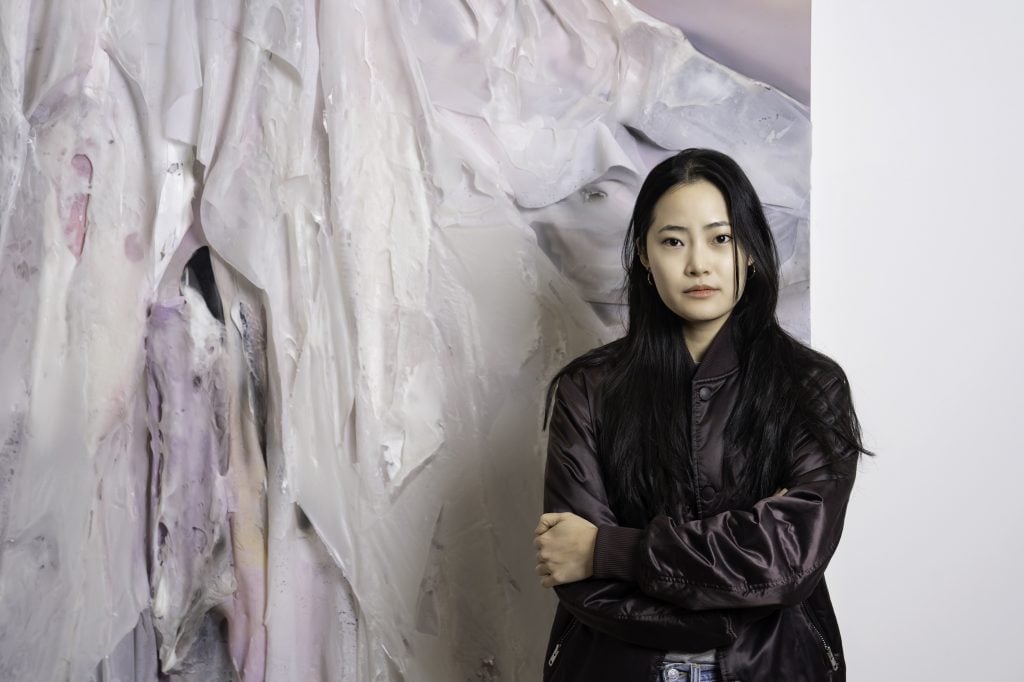
Korean artist Heemin Chung has witnessed the transformation of her home city of Seoul into a technological metropolis over the course of her lifetime. In this buzzing city, the boundaries of night and day no longer exist as they once did. Cell phones, laptop screens, glowing billboards, and streetlights offer a perpetual, humming twilight.
In “Umbra” Chung’s solo debut at Thaddeus Ropac which opens in London today, the rising artist attempts to navigate these contemporary forces, which have “reoriented our experience of life beyond recognizability.” Chung’s new works encompass painting, sculpture, and video work and bridge inspirations from ancient Korean culture with cutting-edge technological processes. The exhibition title “Umbra” references the shadows cast by celestial bodies such as the earth and moon, where darkness still exists. In these new works, Chung seems to argue for the necessity of night, disconnection, and even death.
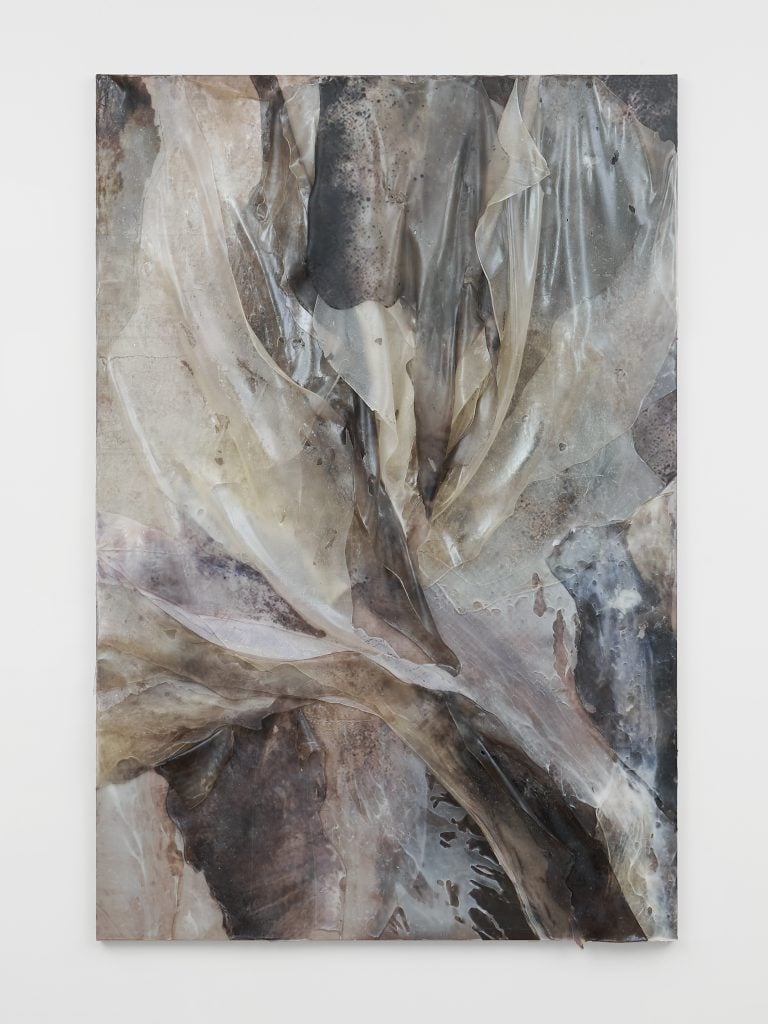
Heemin Chung, From the Old Prophet (2024).© Heemin Chung. Courtesy Thaddaeus Ropac Gallery, London.Photo: artifacts
“There is a traditional play, the Dasiraegi (Rebirth), I have been interested in for years. It’s a melodramatic but simple story of a woman deceiving her husband,” Chung told me from her current residency studio at ISCP in Brooklyn a few weeks ago. “Her husband is blind. The woman falls in love with a monk and has a child.” The play, Chung explained, is typically performed as part of the Korean funerary ritual called the Chobun. “The possibility of new life and laughter and profane jokes are all part of this mourning process,” said Chung. “Life and death coexist.”
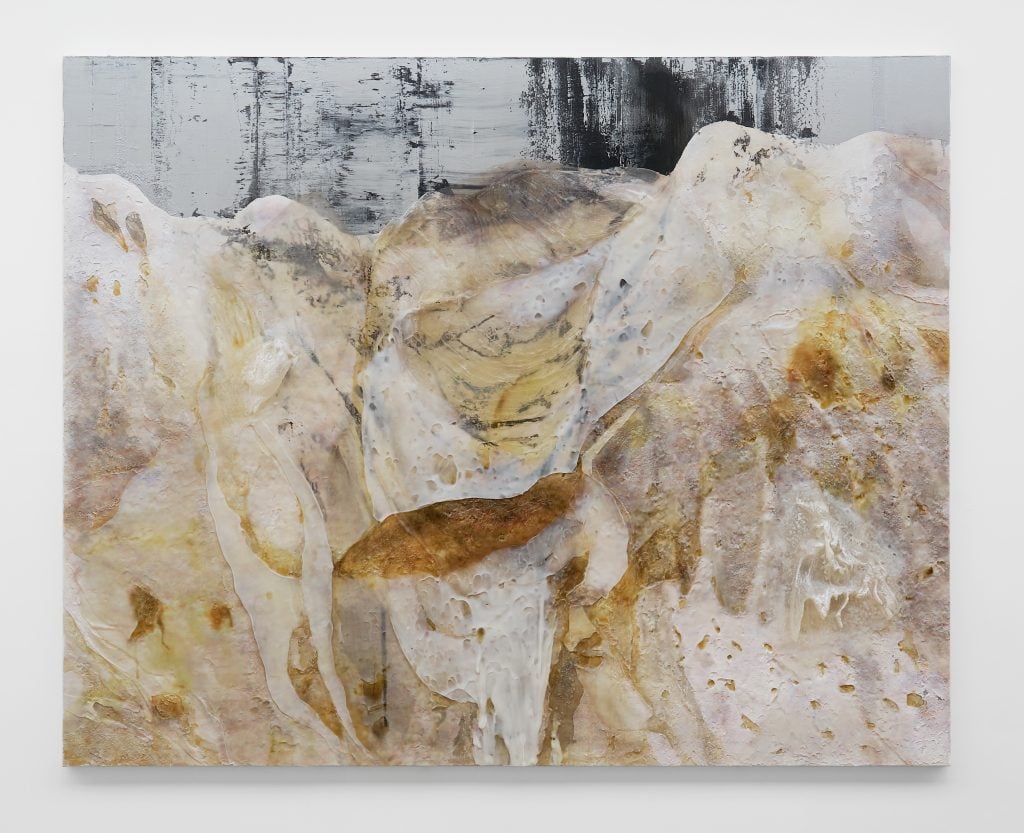
Heemin Chung, The Sleeping Birds – Thin, Ambiguous, Abstract, and Intermediate – Which Decided to Be Engraved on the Expanded Land Was Already There but Nowhere to Be Found (2024), © Heemin Chung. Courtesy Thaddaeus Ropac Gallery, London · Paris · Salzburg · Seoul. Photo: artifacts
For her London show, Chung has reimagined this darkly comic play in a series of multimedia sculptures incorporating video which retell this story in two timelines—one of her childhood and the other, a day in the life of her grandfather. These sculptures are presented on a stage-like LED platform that echoes this sense of theatricality.
The show also includes new paintings; Chung’s paintings are made through a unique digital-meets-traditional process she first developed in 2017. To make her works, the artist translates images she’s found on the Internet or photographed herself into 3-D prints made in a gel material. In their 3-D printed iteration, these images are desaturated from their hues and become shadow visions of themselves. Chung drapes and folds these membranes into sculptural, veil-like surfaces.
“I model these gel forms on the surface and then I cover them with paint. For me, this process asks a rhetorical question of how I can come back into my body,” she explained. “Through my process, I collect and reanimate dead data from the world around me.”
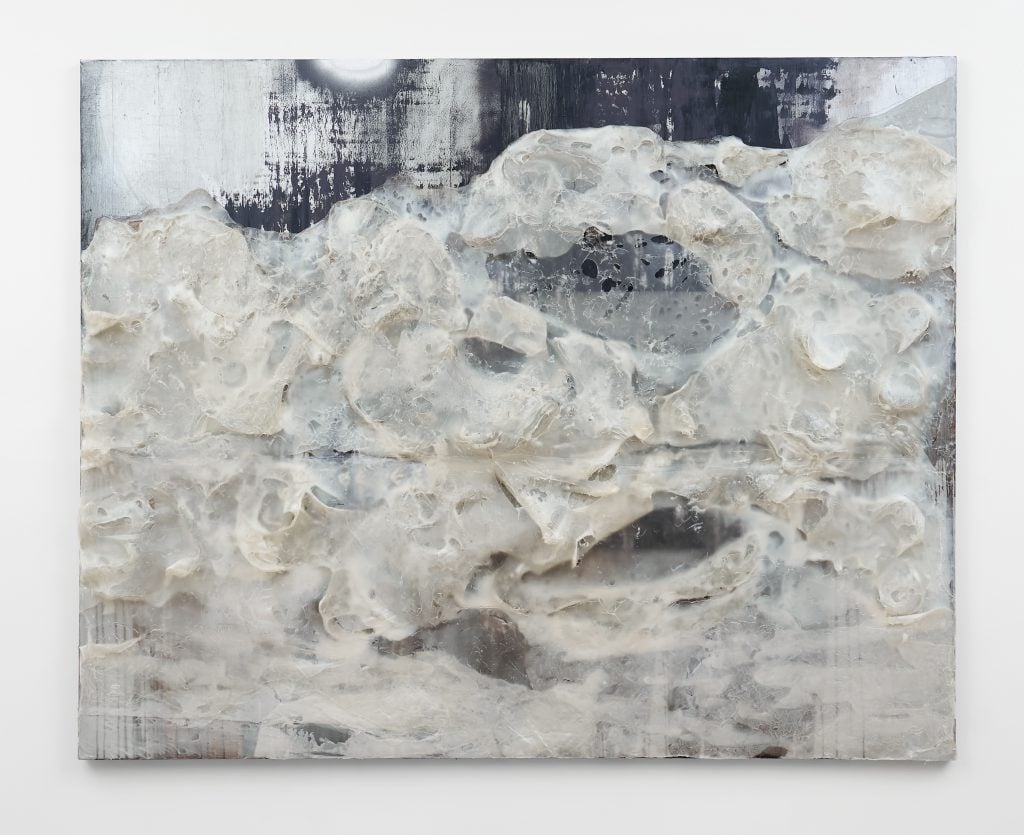
Heemin Chung, I Walked on the Snow. In the Eerie Reflection on the Icy Thin Ground, I Drowned Like an Ant in Sugar Water(2024).© Heemin Chung. Courtesy Thaddaeus Ropac Gallery. Photo: artifacts
Earlier series of Chung’s paintings have focused on flowers. These most recent paintings she likens to landscapes. For this series, she photographed objects from the natural world: shells, bark, feathers, car shells, flowers, and potholes she encountered during early morning walks through Seoul. For Chung, these vignettes speak to the rebirth and decline that still exist in her home city, even if often ignored in the name of innovation. “Seoul is an ever-changing city that has been modernized rapidly. It feels like a completely different city and much has been lost in that process,” she explained.
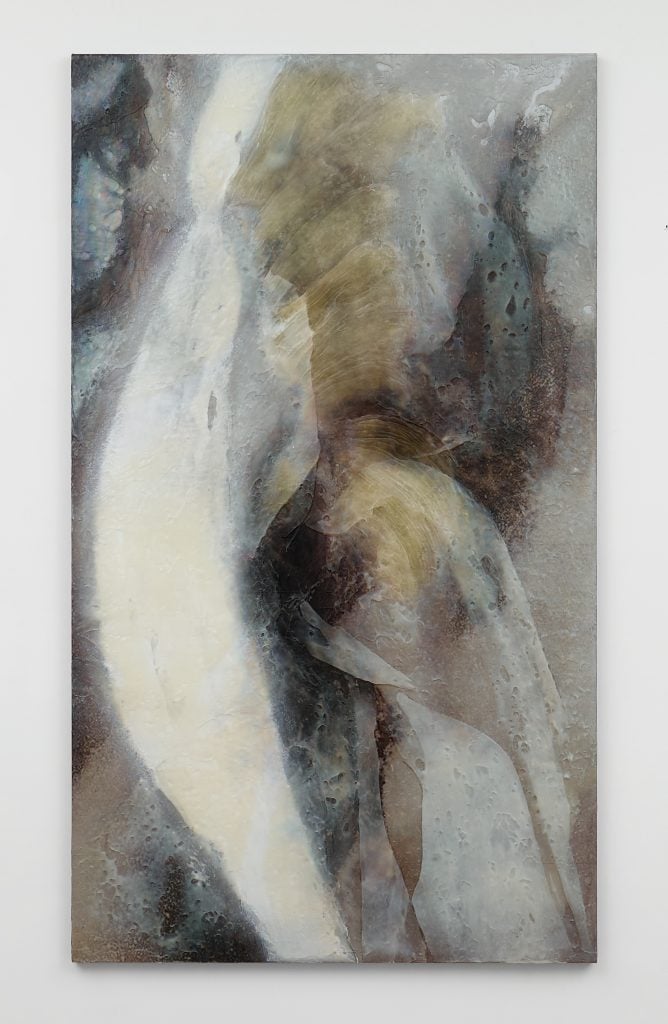
Heemin Chung, Wounded Soul With Phantom Foreignness, Yet Something Remains (2024).© Heemin Chung. Courtesy Thaddaeus Ropac Gallery, London. Photo: artifacts
For these canvases, Chung has employed a subtle palette that hovers between white, black, and gray with hints of bruised purple and pink. The tones are reminiscent of various atmospheric phenomena from fog to the break of dawn.
Ultimately, the artist sees her process as one of both loss and retrieval. “There is a dissolution in this city, with the accelerated media culture, and I want to express the physicality and emotions that still exist,” she said. While data flattens the dimensionality of life, the experiences of texture and dimensionality, Chung brings these changed forms back into a physical reality, even if altered. Through these works, Chung “rematerializes” the 2D to suggest new, open-ended possibilities for the future. Chung believes in painting’s potential to encompass our new lived, digital experiences and the shifting ways we see the world. In joining, these disparate forces of digital imagery, printed sculpture, and painting, her artworks create their own noise-canceling thrum, offering moments of tranquility for our wearied contemporary minds and bodies.
“Heemin Chung: Umbra” is on view at Thaddeus Ropac, London, through November 20, 2024.





